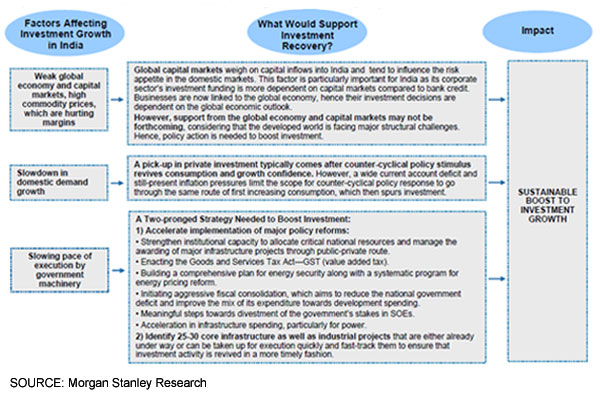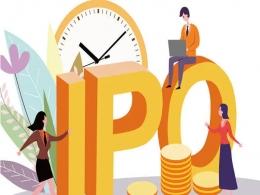
Persistent bad growth mix keeps macro stability risks alive: We believe the government's desire to sustain high domestic demand with less productive public spending at a time when the productive private investment has been declining as % of GDP is showing up in form of three key symptoms : (a) persistent high inflation; (b) high current account deficit; and (c) tight interbank liquidity and elevated short term cost capital.
Has inflation problem really been addressed? We believe that headline industrial production data understates the aggregate demand trend. Considering the fiscal policy is still very expansionary and RBI has already embarked on easing path faster than warranted, risk of inflation pressures re-emerging is very high. We believe a significant part of the recent deceleration in headline inflation and core inflation can be attributed to delay in hike of administered product prices. As per our Oil and Gas analyst, Vinay Jaising's estimate, if the government wants to restrict oil subsidy burden to the levels provided in the Union Budget F2013, domestic regulated fuel prices will have to be increased by 19.5% assuming (governments share in subsidy at ~22%) or by 39% (governments share in subsidy at 50%) resulting in WPI inflation increase of 123bps or 247bps respectively. Moreover, potential slowdown in capital inflows and its impact on the exchange rate will only add to inflation pressures.
Current account deficit at an all-time high: Post crisis, the gross saving rate fell more than the decline in overall investment, leading to a widening of the current account deficit (a representation of the gap between national saving and investment). The decline in public saving has been primarily driven by the rise in the government's revenue deficit. Hence, in our view, the widening of the current account deficit post credit crisis is largely due to higher revenue deficit. We believe the rise gold imports is a mere symptom of loose fiscal policy, high inflation and low real rates.
Tight inter-bank liquidity and high loan-deposit ratio: High inflation expectations have meant that credit growth has persistently been above deposit growth taking loan-deposit ratio (LDR) to close to all-time high of 76.5%. Considering that banks are already holding about 29% their deposits in form of approved securities (including G-sec), this rise in LDR is being increasingly funded via interbank liquidity from RBI. The stretch in banking system is reflected in persistent high short-term cost of capital.
What's end game? Risk of balance of payments (BOP) stress remains high. Unless the government initiates major policy action to cut its spending (including subsidies) and/or international crude oil prices decline sharply due to improved outlook of global supply soon, India will remain exposed to any potential slowdown in capital inflows increasing pressure on the exchange rate, which in turn could quickly transmit into a rise in the domestic cost of capital hurting growth further. Even if a BOP shock is avoided with capital inflows remaining stable (by issuance of sovereign dollar bonds or dollar deposits), unless fiscal policy is truly tightened it will be hard to bring down short-term cost of capital meaningfully and revive growth trend.
(Chetan Ahya is an executive director and the India & South East Asia economist at Morgan Stanley.)







